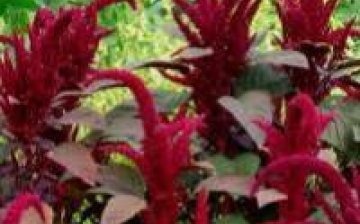Amaranth in the photo
Amaranth in the photo is an annual herb with small flowers, which are collected in spike-paniculate dense inflorescences. The plant belongs to the Amaranth family. There are about 60 species that inhabit warm and temperate areas.
The amaranth in the photo has regular, whole leaves, elongated at the base into a petiole. The leaves have a small tip and a notch at the top. Axillary flowers are arranged in bunches. The apical flowers are collected in dense spike-shaped panicles. There are monoecious and dioecious species. The fruit is a capsule. Amaranth can have simple or branched stems.
The amaranth plant is wind-pollinated, it loves light and warmth. The best temperature for amaranth is 20 degrees or more. The plant can also grow in arid climates. Amaranth is an unpretentious plant that can grow on any soil. Excess moisture for this plant is unacceptable. Amaranth is resistant to disease. The yield of the plant is high.
Amaranth contains polyunsaturated fatty acids, protein, vitamins, mineral salts, etc. Amaranth is widely used in medicine, it is used for anemia, hemorrhoids, vitamin deficiencies, diabetes, burns, loss of strength, obesity, neuroses, skin diseases, periodontitis, stomatitis, peptic ulcer, atherosclerosis. Amaranth has antitumor and wound healing properties, lowers the amount of cholesterol in the blood.
Side dishes, salads, snacks, seasonings for soups and borscht are prepared from amaranth leaves, the young stem is pickled. Amaranth is also used in animal feed.




There is also amaranth oil, which is added to many creams, as it has a moisturizing effect.
I use amaranth leaves for pickling, they give the pickle a delicate pink color. The brine does not affect the taste characteristics and performs a purely decorative function. Not a troublesome plant, it needs minimal maintenance.